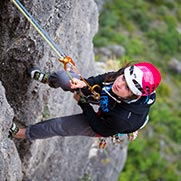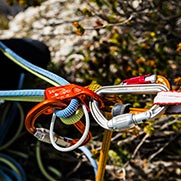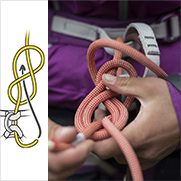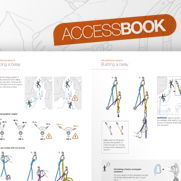Ascending the rope in self-rescue: take care when approaching the anchor
Warnings
- Carefully read the Instructions for Use used in this technical advice before consulting the advice itself. You must have already read and understood the information in the Instructions for Use to be able to understand this supplementary information.
- Mastering these techniques requires specific training. Work with a professional to confirm your ability to perform these techniques safely and independently before attempting them unsupervised.
- We provide examples of techniques related to your activity. There may be others that we do not describe here.
When ascending rope, it is common to climb the wall instead of the rope when approaching the anchor.
At this moment, even if it is possible to make some climbing moves, the rope must always remain taut between the anchor and the ascenders to limit the potential fall distance.
If the climber neglects taking up slack, just a single step can significantly increase the fall factor. The consequences of a slip can be severe, as arriving at the anchor is a time when the climber feels more or less "out of the woods."
Fall tests in a self-rescue situation (ascending rope) close to the anchor.
Warning: second ascender and/or self-belay not shown.
Fall of 0.5 m, approaching the anchor
| Rope | Impact force |
| 8 mm low stretch kernmantel | 4.3 kN |
| 8.1 mm dynamic | 3.4 kN |
| Rope | Impact force |
| 10.5 mm low stretch kernmantel | 4.3 kN |
Fall of 1 m at anchor level
| Rope | Impact force | ||
| 8 mm low stretch kernmantel | 5.4 kN |
Cut sheath |
|
| 8.1 mm dynamic | 4.2 kN | Damaged sheath | |
| Rope | Impact force |
| 10.5 mm low stretch kernmantel | 5.5 kN |
Warning:
When approaching the belay station, one step is enough to worsen the consequences of a fall. In this example, 50 cm makes the difference between an "average" and a "severe" fall.









